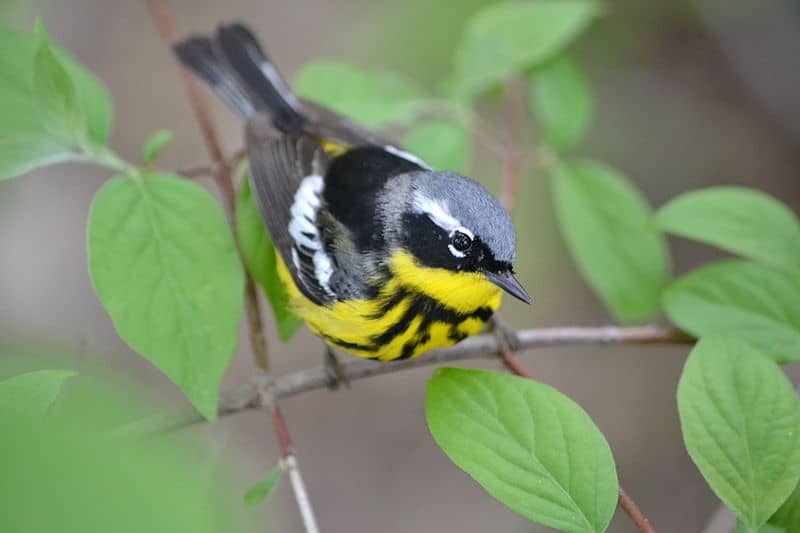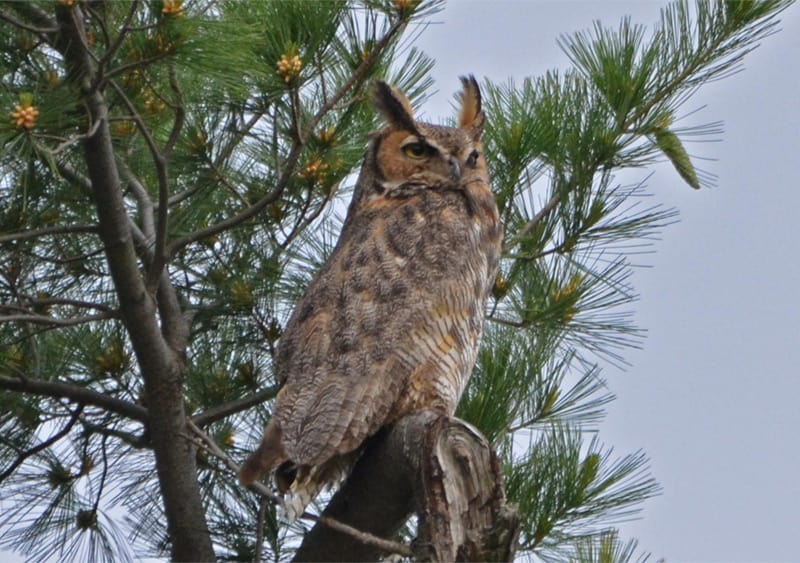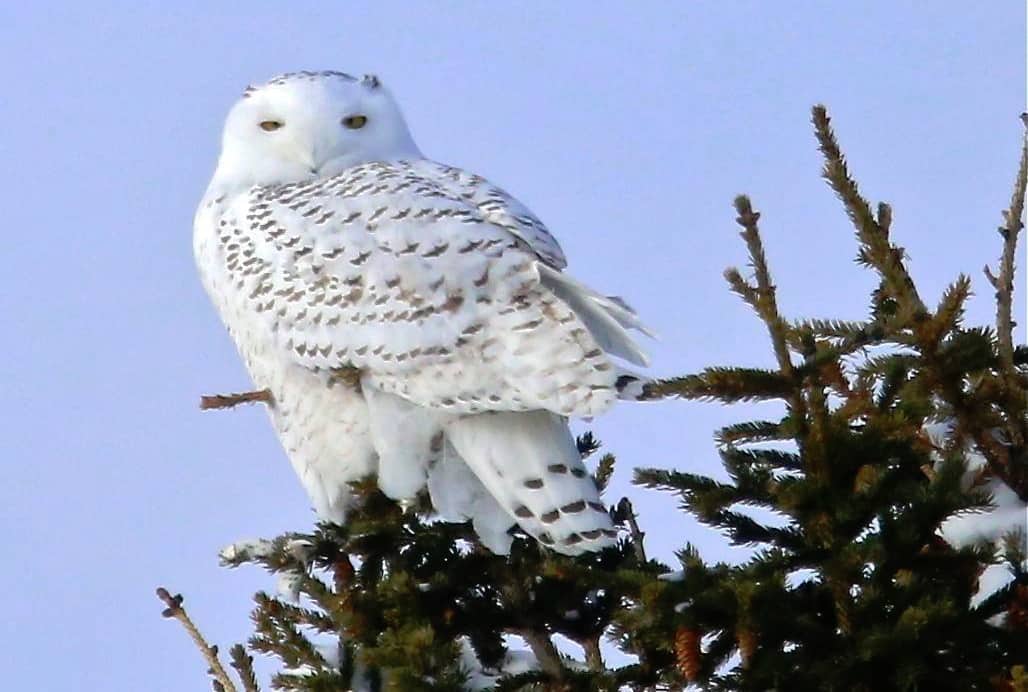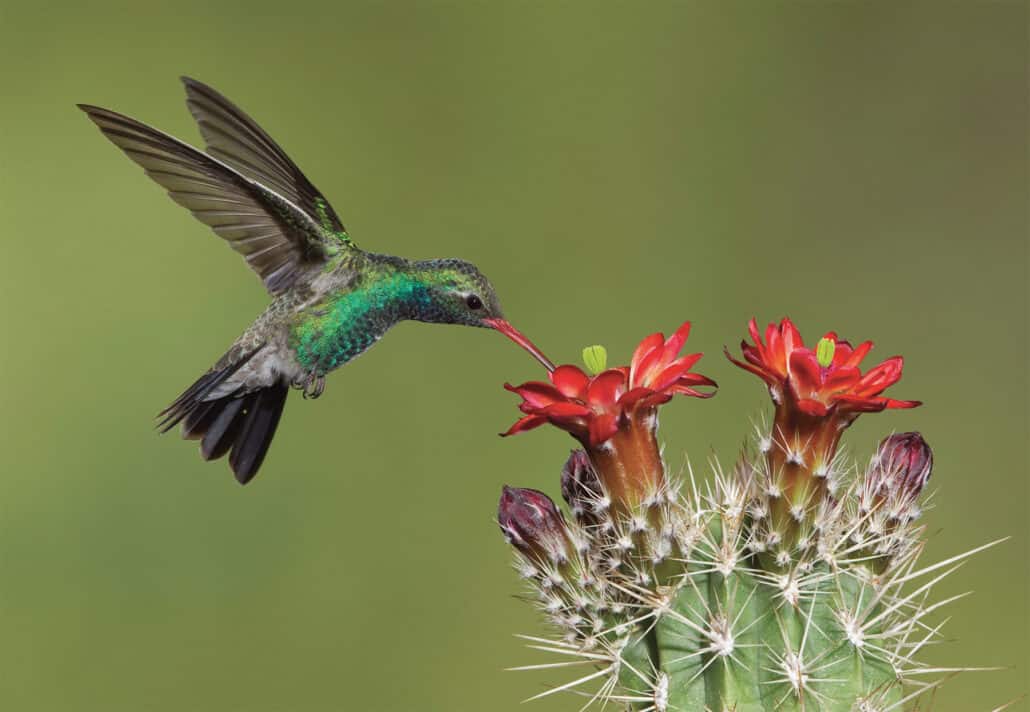Spring Birds of Florida (March, April, May)
The spring season is a time of great change in Florida. Because of its southerly location, things start happening earlier in Florida, ornithologically speaking, than in most other states. This applies both to the onset of breeding activities in many bird species and also to migration. Great colonies of wading birds inhabit many of the wetland areas throughout the state but are concentrated mainly in central and southern Florida. It is these that contribute greatly to the ornithological flavor of the peninsula.
Wherever you go, long-legged wading birds are still a conspicuous feature of the landscape, despite the heavy persecution they endured during the early years of the 20th century. Because of its largely subtropical climate the breeding season for many species may be more prolonged than in many other areas of the country and this is particularly true for long-legged wading species. Birds such as great blue herons, great, snowy and cattle egrets, little blue and tricolored herons, glossy and white ibises, roseate spoonbills, and both black-crowned and yellow-crowned night-herons nest in large mixed colonies, often above water or on mangrove islands or islands in the middle of lakes to escape from predators.
The bulk of the egg laying activities begin in March although breeding can take place considerably earlier, especially in the southern part of the state. By March thousands of wood storks are nesting in scattered colonies across the state, most notably at the Audubon Society’s Corkscrew Swamp Sanctuary. After the breeding season they disperse widely over the whole state.
Many other species of resident land birds and passerines also begin breeding in earnest in March. Throughout the state oak woodlands come alive with the songs of Carolina wrens and northern cardinals. Flatwoods of longleaf pine such as those found in Apalachicola, Osceola, and Ocala national forests harbor nesting pine warblers, eastern bluebirds, brown-headed nuthatches, and eastern towhees. After being very secretive and hard to find during the winter in this habitat Bachman’s sparrows suddenly draw attention to them selves by delivering their beautiful song from exposed perches on dead pine snags. A little later, in April, red-cockaded woodpeckers begin their cooperative breeding activities, with three or more birds attending each nest located exclusively in a pine tree which has heartwood infected with red heart fungus.
Along Florida’s extensive beaches several species that require undisturbed habitat begin to nest in late April and May, particularly along the Gulf Coast. These include the diminutive and decreasing snowy plover, the larger Wilson’s plover, least, royal, and sandwich terns, black skimmer, and American oystercatcher. Because of this and the fact that millions of people share this precious habitat, these birds are coming under increasing pressure and have increasingly taken to nesting on offshore barrier islands, artificial spoil islands (such as those in Tampa Bay), and even on gravel rooftops in coastal cities in the case of the black skimmer, least tern and American oystercatcher, which use these locations to escape from people and predators.
March, April, and May also mark the breeding season for tens of thousands of sooty terns, thousands of brown noddies, and hundreds of magnificent frigatebirds on Bush Key in the Dry Tortugas, about 70 miles off Key West in the Gulf of Mexico. For all three of these species, this tiny tropical island is the only breeding locality in North America. In most years one or more black noddies can also be found here although separating them form their larger cousins is not always easy.
A few roseate terns and masked boobies also breed on the Dry Tortugas, the latter on Hospital Key which is once again the only breeding locality for this species on the continent. Taking a boat trip out to these islands in spring usually produces seabirds such as pomarine and parasitic jaegers, Audubon’s shearwater, brown booby, and bridled tern.
Florida’s shape and geographic location at the southeastern extremity of the continent make it an ideal stopover point for millions of neotropical migrants on their way from wintering areas in Central America and the Caribbean to more northerly breeding grounds. Migration may begin as early as mid-March for some species such as the great crested flycatcher and northern parula but the bulk of the passage takes place in the latter half of April.
At this time a visit to one of Florida’s famous migrant traps such as Garden Key in the Dry Tortugas, Fort De Soto County Park, Sanibel Island lighthouse, Cedar Key, or Fort Pickens in the panhandle can be a particularly rewarding experience. This is true especially after the passing of a weather front from the west, which can ground large numbers of birds crossing the Gulf of Mexico. In these conditions trees and bushes can be literally festooned with hundreds of colorful land birds. These include dazzling scarlet and summer tanagers, blue and rose-breasted grosbeaks, indigo buntings, and orchard and Baltimore orioles.
However for many birders it is the sheer variety of stunning New World warblers that provides the greatest draw. These include gorgeous Cape May and black-throated blue warblers, both of which winter in the Greater Antilles, ground hugging Kentucky and hooded warblers from Central America, more somber worm-eating and Swainson’s warblers, ovenbirds, Louisiana and northern waterthrushes and a host of others including American redstart and prothonotary, Tennessee, blue-winged, golden-winged, back-and-white, yellow, prairie, black-throated green, caerulean, magnolia, chestnut-sided, and Blackburnian warblers. In early May there is even a chance of finding a Connecticut warbler walking unobtrusively along the ground. This colorful array of migrants is accompanied by a more somber suite of species including eastern kingbird, yellow-billed cuckoo, red-eyed, white-eyed and yellow-throated vireos, veery, wood, Swainson’s, and gray-cheeked thrushes.
Several species of Florida specialities are also summer visitors, arriving in late April. These include gray kingbird, mangrove cuckoo, and black-whiskered vireo, all of which frequent coastal mangrove swamps and West Indian hardwood hammocks in the southern part of the state.
Although Florida has a large wintering shorebird population, numbers are augmented in the spring by the arrival of migrants from Central and South America, all molting into pristine breeding plumage. These include upland sandpipers which arrive in April and semipalmted and white-rumped sandpipers which pass through in May.
Each spring a number of Caribbean strays are found in Florida, mainly on the Keys and in the southern part of the state. These include Bahama mockingbird, Key West quail-dove, bananaquit, LaSagra’s flycatcher, and western spindalis.





What’s the best time and place to watch Cranes, Spoonbill and Flamingo, and how is the Spring to reach those big birds? Lin
Hi Lijian, Some sandhill cranes are year-round residents of Florida. They are seen throughout the state March through May, according to eBird. Many migratory sandhills winter in Florida, but they depart early, so it’s safe to say that the sandhill crane population is probably highest in florida in January and February, but really, you should be able to find them throughout the state, especially in central Florida, year round. Roseate spoonbill also can be found year-round, especially along both coasts (but not so much in the panhandle). If you can get to the Everglades, it’s a sure bet. American flamingo is not common in Florida at any time of year (except in captivity). Don’t get your hopes up for that species, but your best bet is probably the Everglades. Have fun birding in Florida! Dawn Hewitt, Bird Watcher’s Digest
Dawn: Thanks for your information. I have been travel in whole Florida for 3 weeks in last Dec. but only see one Spoonbill ( sorry ), and do not see any Flamingo and Sandhill Cranes. I have seen many Cranes in Wheeler NWR recently. I look for returning to Florida in coming Spring and the end of this year ( may be Jan. 2018 ) for 12 – 15 days each trip. I really want to meet Spoonbill, Crane, Peacock and some of attractive birds in Florida. Hope the top 10 spot in Florida suggested from Bird Watching’s Digest can help to plan the trip,and your further recommendation and road map will be appreciated. Thanks again and cheer for those who love Birding!
Lin